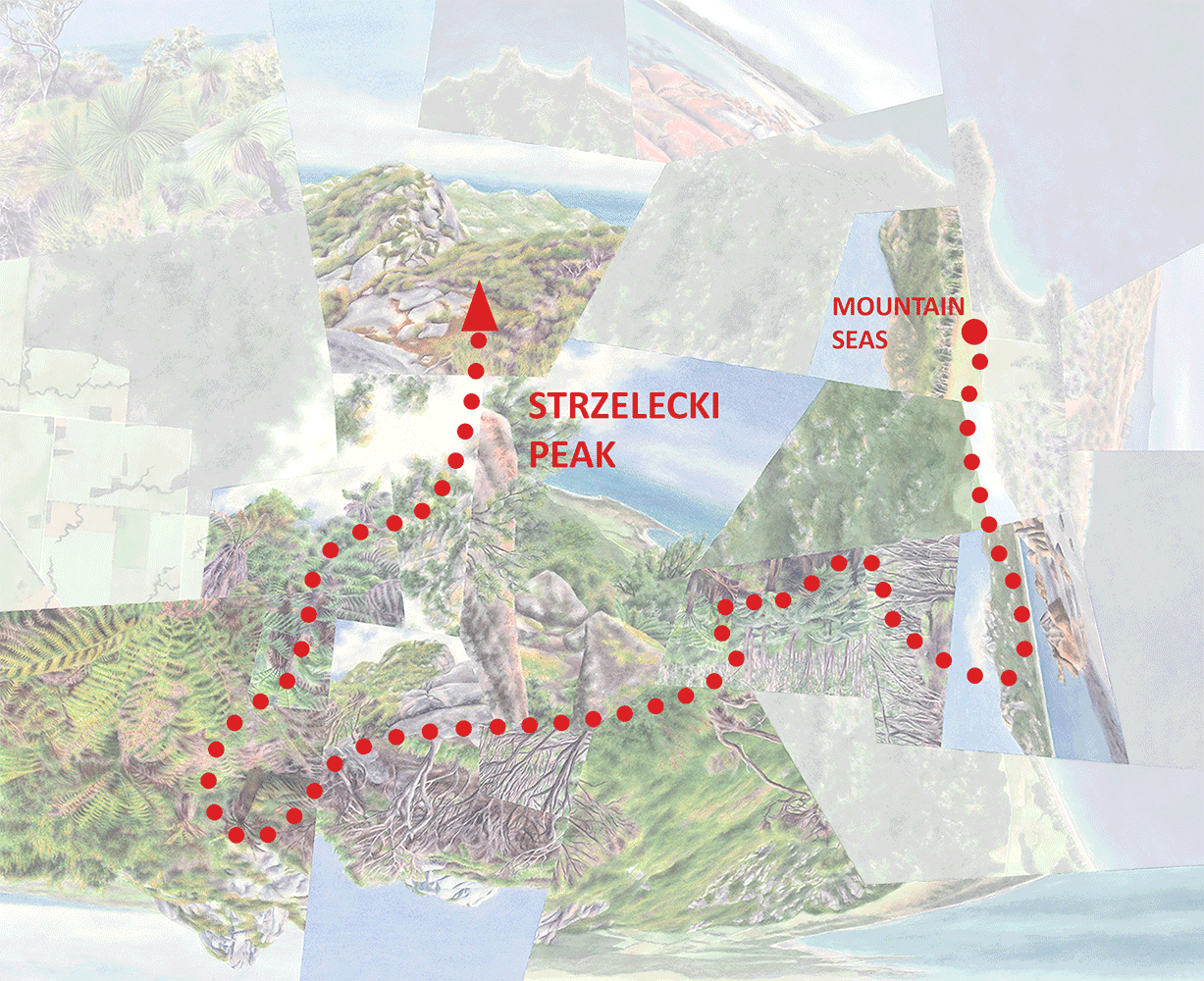Before I take you to today’s destination, an announcement—I’m now on Spotify! And Apple Music, YouTube Music, and others…with The Last Island, my recent orchestral composition. Just an experiment really, plus I thought it would be fun to design an album cover.
It'll be a long-shot for this to get traction (these aren’t great platforms for classical/instrumental music plus I didn't compose the beginning to be an attention-grabber). But help me out if you can!—by liking, and listening to at least a few minutes. For Spotify, click here or on the image!
Now, to the Galápagos—specifically Plaza Sur (or South Plaza), an island I haven’t mentioned in my previous posts on the archipelago. This one is tiny and low, covering only about 0.1 square kilometer, so there’s no wet highland zone as with the others I’ve described. In this case the “edge” that drew me in was simply the edge of the island itself—that is, the “compressed” aspect of the place that I wanted to accentuate was the smallness of the landmass rather than a sense of downsized ecological/meteorological patterns. That it felt like its own miniature world, then, didn’t have anything to do with the “island-continent” phenomenon that I’d apply to the larger, ecologically diverse islands in the Galápagos (though that phenomenon is best and most commonly associated with the Big Island of Hawaii, with tropical and alpine in addition to wet and dry).
The miniature-world quality did, though, have something to do with the prominent animal life, maybe because it makes the environment seem more multi-dimensional and “complete” in its own way. Of course the Galápagos is most famous for its fauna, but as you know it’s the flora that usually catches my attention instead. (I sometimes jokingly refer to animals as “mobile life forms”—for some reason things that stay put, with the passage of time a less central or perceptible factor, are much more interesting to me. I pay more attention to fauna on the level of biogeography, since ranges of animal species are a lot more stationary than individuals. It might be analogous to my interest in buildings but not—in the least!—cars.) On Plaza Sur, though, the wildlife somehow comes across as a particularly integral fixture of the landscape. Maybe the animals seem to stand out more, or seem more confined and stationary (I said “fixture” on purpose), because of the smallness and sparseness of their surroundings. (Of course most of them move around quite a bit, including between islands, but my outlook is one of distilling and idealizing.) This greater-than-usual prominence of animals in my particular experience of the island is captured in Habitat, the first watercolor where I’ve incorporated them; the title itself reflects that greater inclusivity.
Habitat, watercolor on aquabord, 24”x36.”
The most eye-catching animal on the island, though less remarkable than its marine counterpart, is the land iguana—bright yellow to orange and feeding on the fruits and foliage of giant prickly pear cacti. Beyond that there’s plentiful bird and marine life, in the watercolor represented by swallow-tailed gulls and sea lions.
Giant Opuntia cacti—not quite as giant as on some other islands in the archipelago but the only real tree on this one.
Land iguana (Conolophus subcristatus).
Enlarged from the watercolor—sea lions, and iguana guarding a cactus pad.
Swallow-tailed gulls.
Like a few other works, this is one where the overall compositional pattern is meant to reflect some general quality of the place, in this case a diffuse/atmospheric one. The fragments are triangular or nearly triangular, and that angularity is meant to capture an overall aura of “sharpness”—spiny cacti, spikey iguanas, and hot/bright sunlight. The predominance of reds, yellows, and oranges (which I played up a little) in the iguanas and the creeping Sesuvium vegetation also reinforces that sensation of heat.
Habitat, the animated journey. The guided hike around the island follows a loop trail, beginning and ending at the jetty. As usual the form of the route is highly abstracted, modified to fit with the selected imagery.
Plaza Sur isn’t by any means immune to the archipelago’s many conservation challenges, but since it’s tiny and uninhabited, impacts can be relatively tightly controlled and monitored. One of those impacts has been a decline in the Opuntia cactus population due to local extinction of hawks that feed on the iguanas (which in turn eat the cactus fruits and limit the plant’s ability to regenerate). A project to re-grow the population is underway.
Darren






















